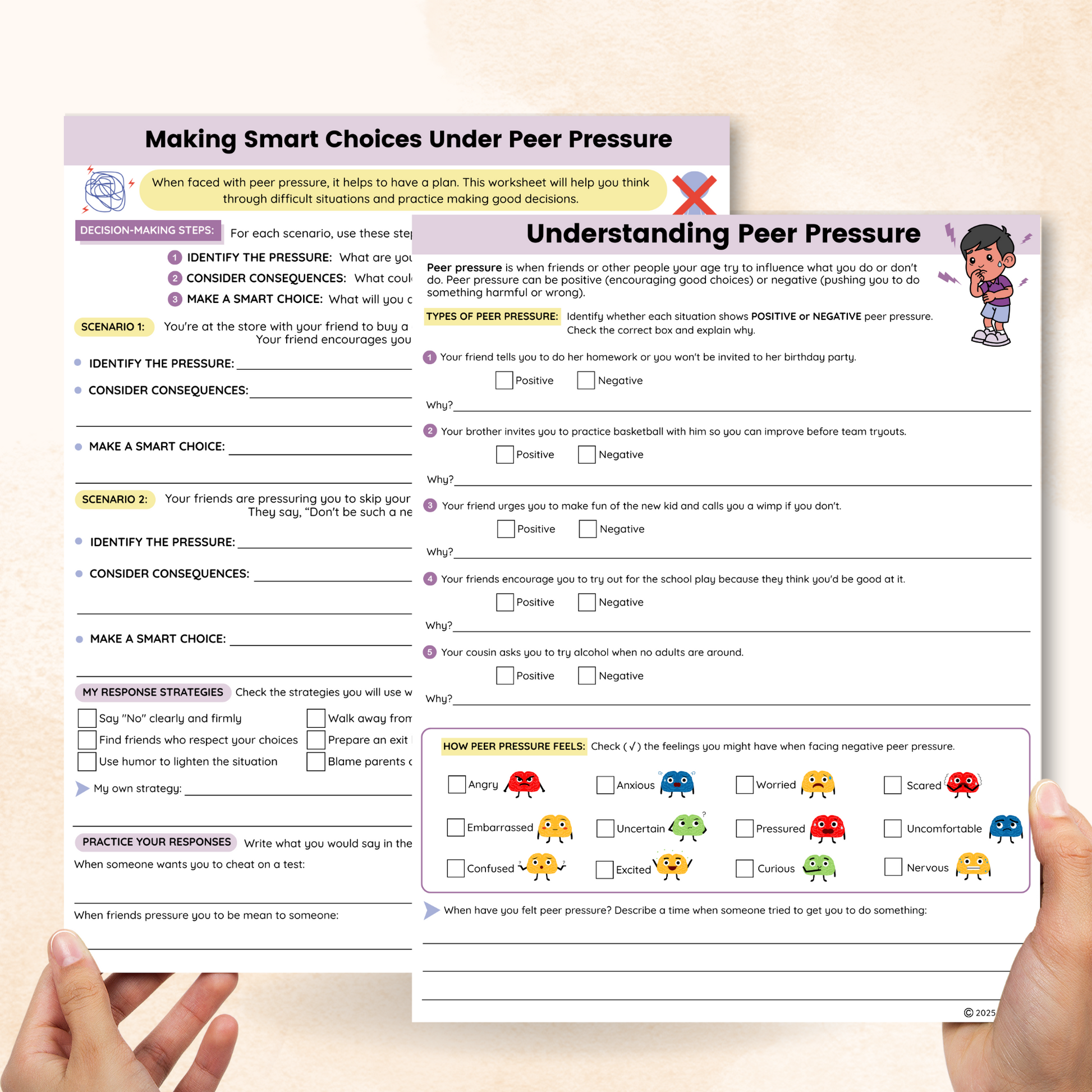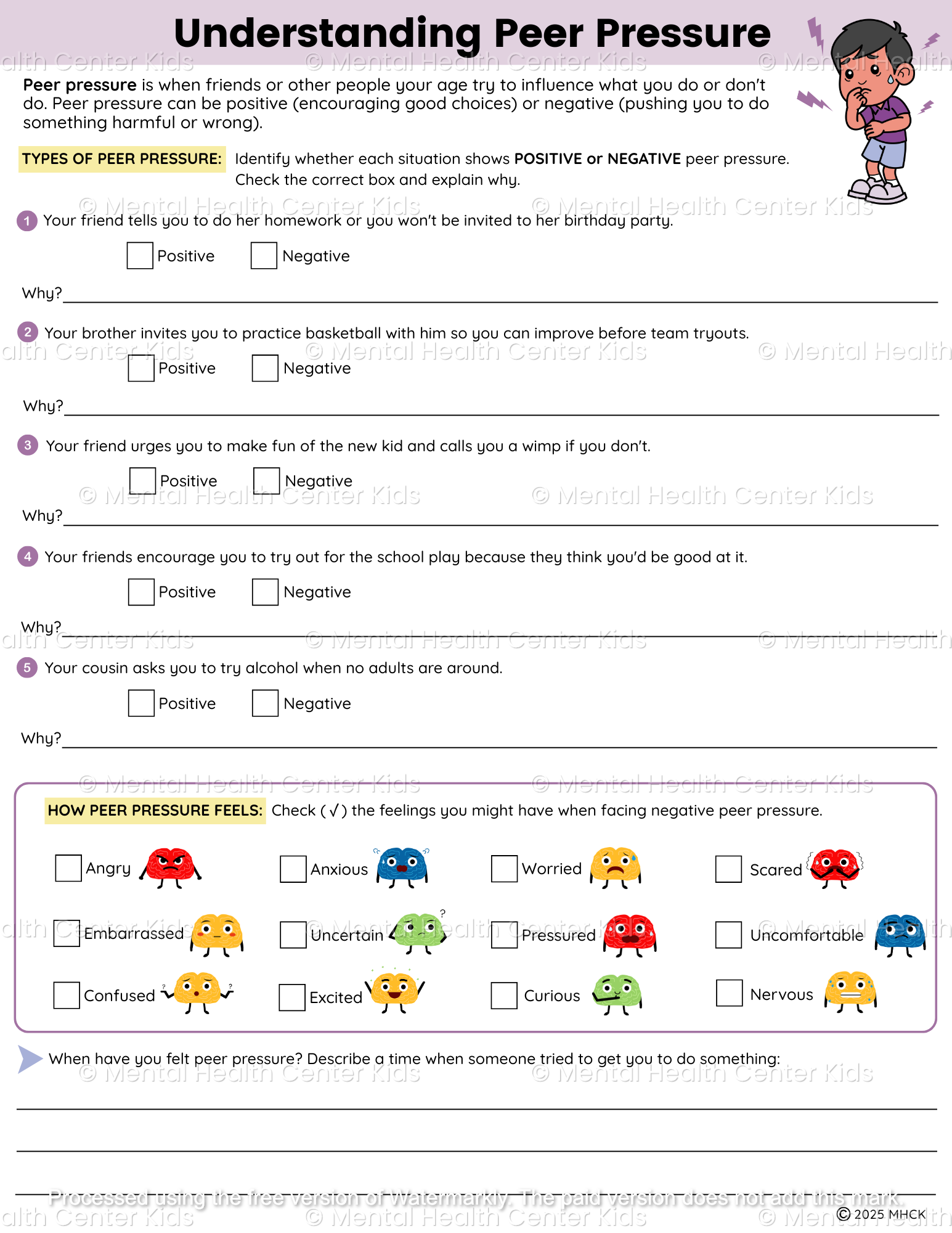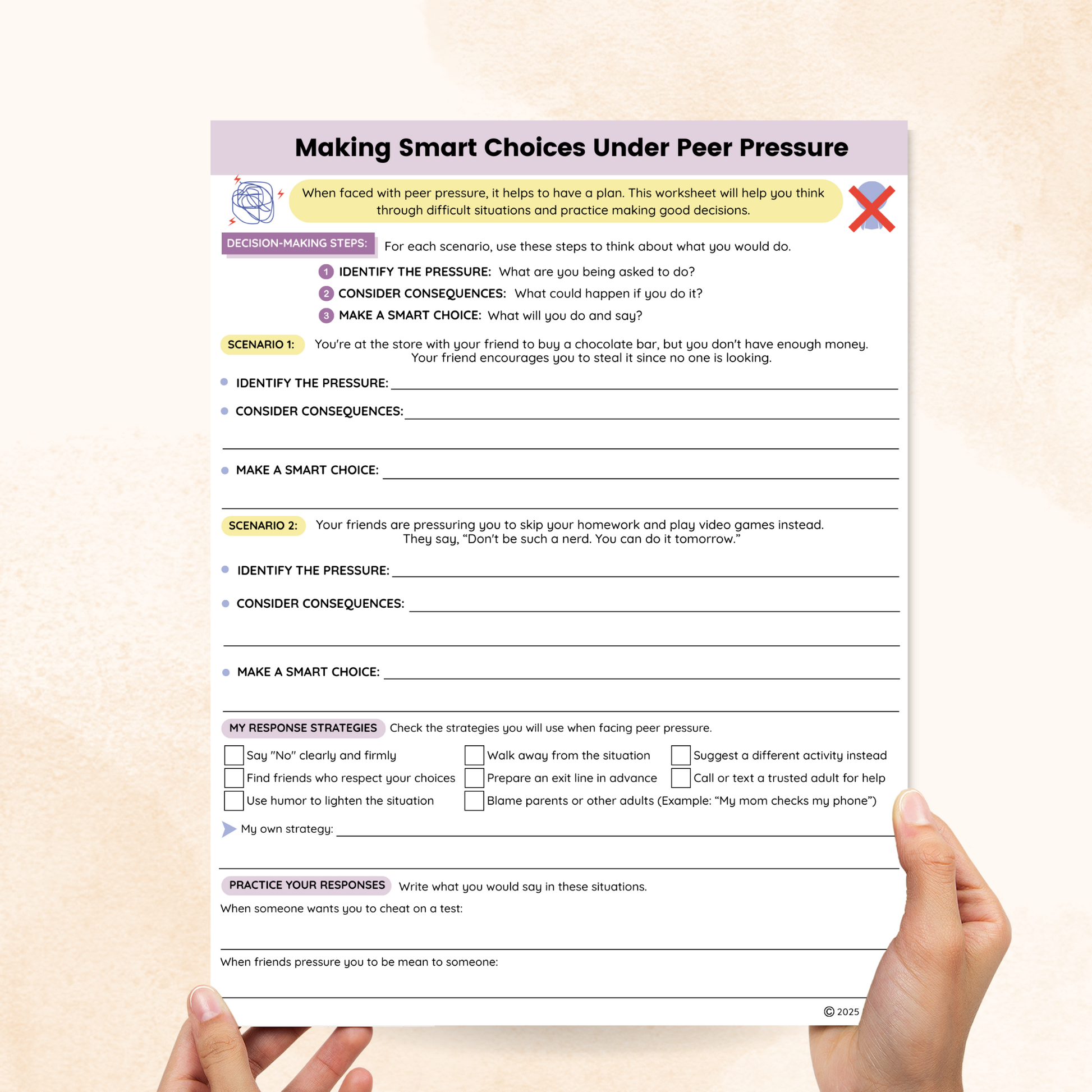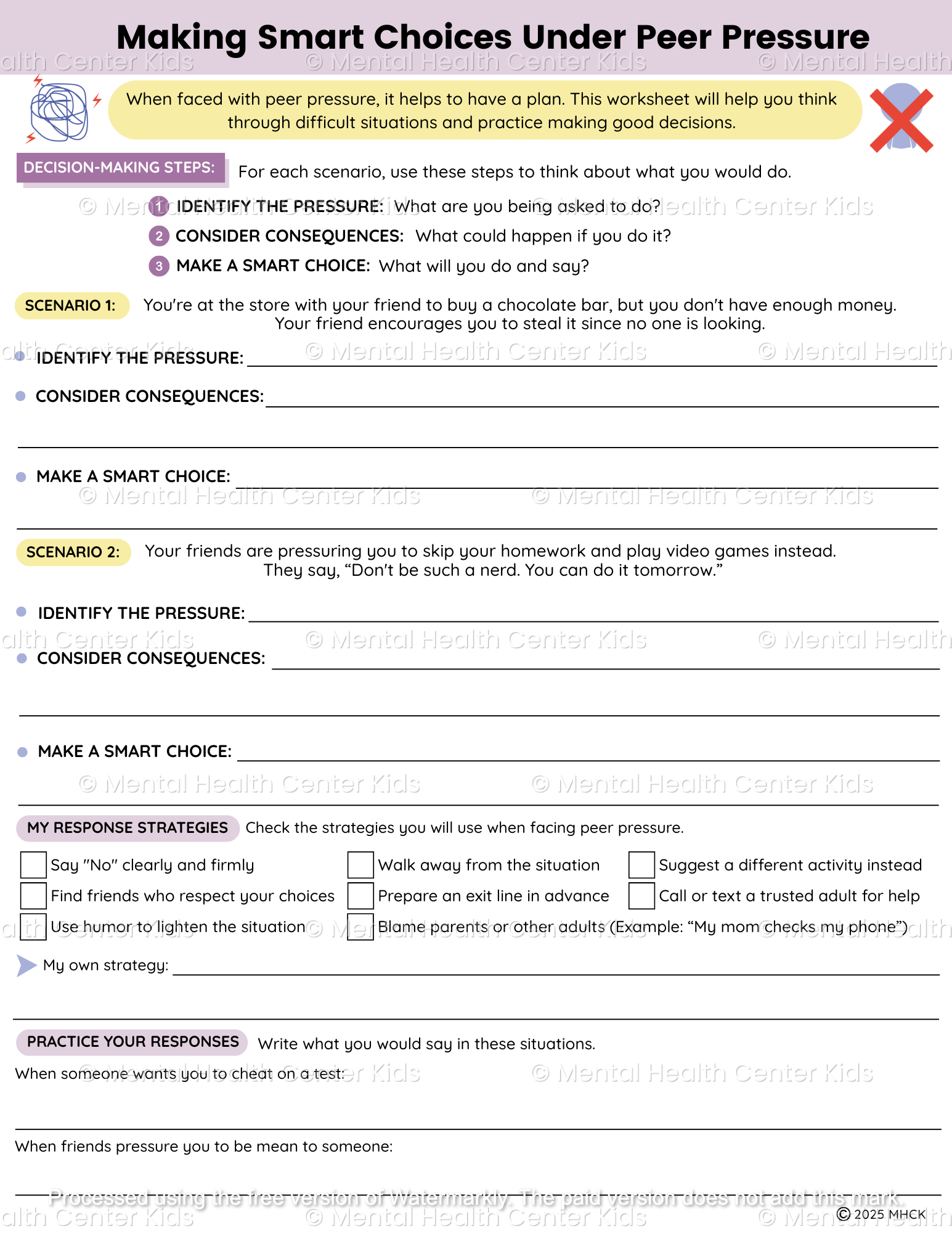Peer Pressure Worksheets (2 Pages)
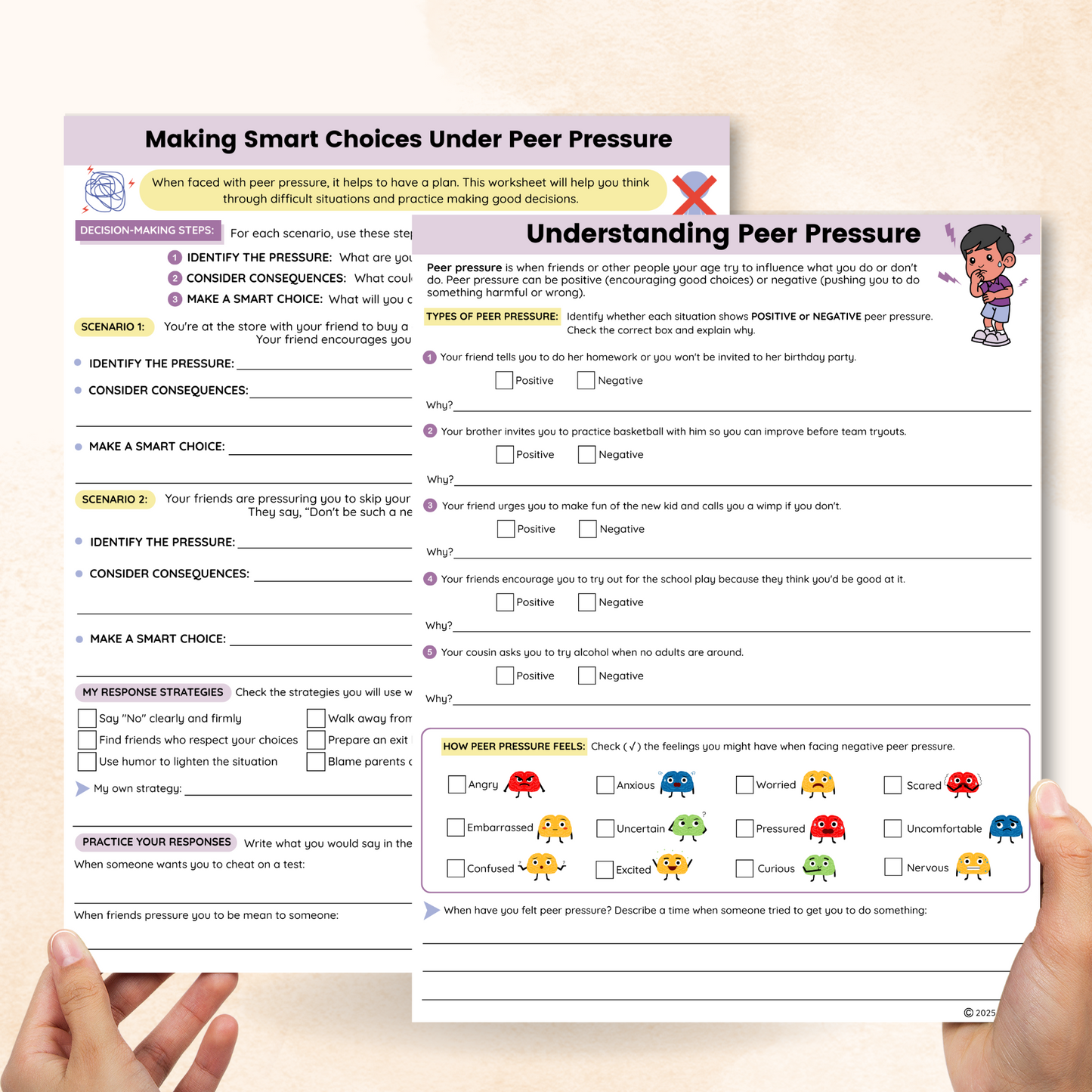

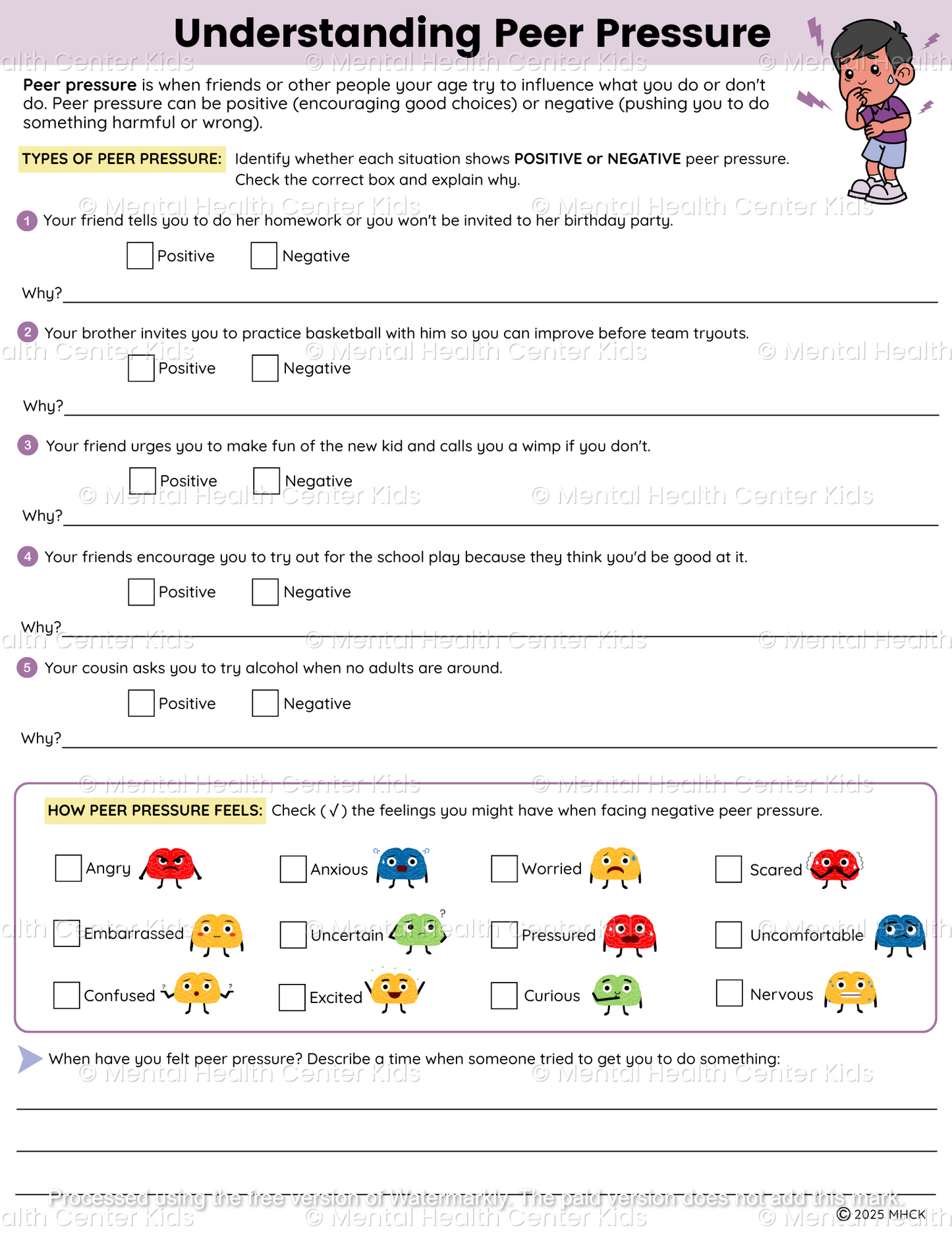
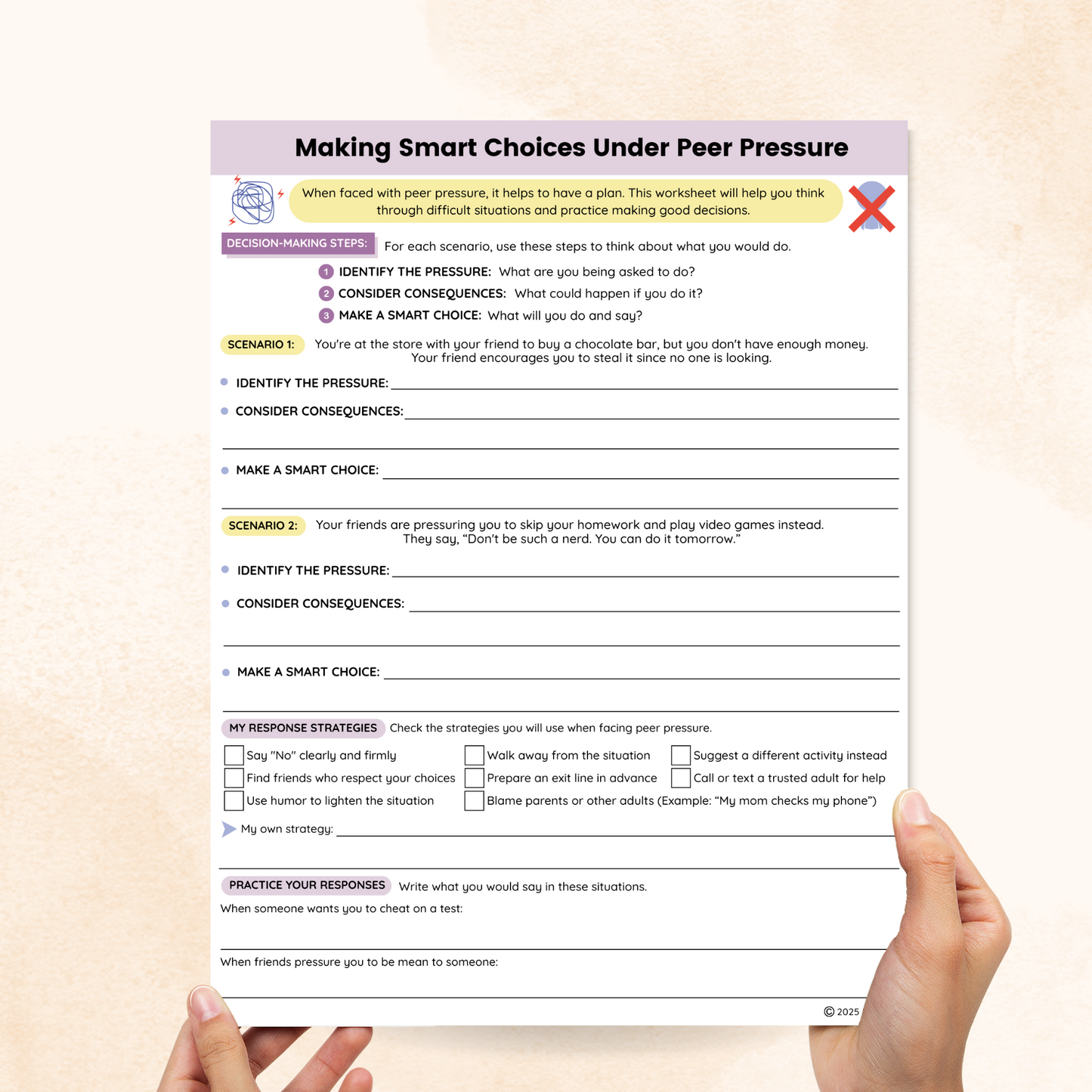
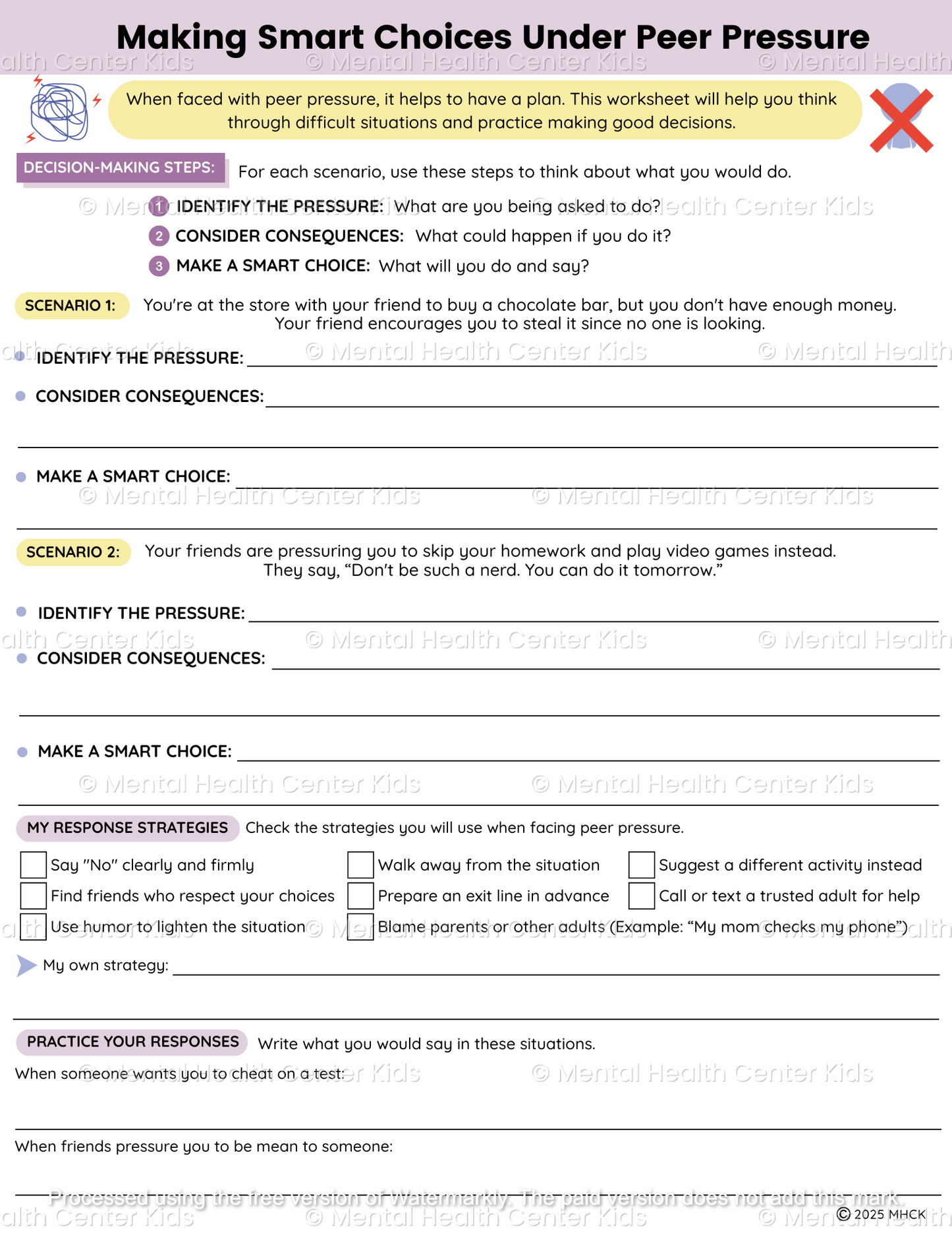

Peer pressure is a common part of growing up, but it can be hard to recognize and even harder to resist. Peer pressure doesn’t always come in words; it can show up quietly through looks, laughs, or the fear of being left out. How young people respond to these moments can shape their confidence, choices, and sense of self.
The Peer Pressure Worksheets include two focused worksheets. Understanding Peer Pressure lets users explore how peer pressure feels to them, match examples with types of peer pressure, and reflect on a real-life moment they experienced. Making Smart Choices Under Peer Pressure offers a decision-making guide and gives scenarios where they can practice making strong, thoughtful choices. They also get to pick which strategies they believe could help the most when things get tough.
Going through these worksheets can help kids pause and think before going along with something that doesn’t feel right. One thing they can do is practice saying “no” in their own words so it feels more natural when the time comes.
Parents and teachers can also introduce a “Smart Response Wall,” where young people write down short phrases or steps they’ve used (or want to try) when dealing with peer pressure.
These worksheets pair nicely with our How To Cope With Peer Pressure handout.
*This item is an instant digital download. A link to download your files will be emailed to you once payment is confirmed.
Want more resources like this? Check out our full catalog of social skills worksheets.
References:
- Haun, D. B., & Tomasello, M. (2011). Conformity to peer pressure in preschool children. Child Development, 82(6), 1759-1767. https://doi.org/10.1111/j.1467-8624.2011.01666.x
- Ricijas, Neven & Lebedina-Manzoni, Marija. (2013). CHARACTERISTICS OF YOUTH REGARDING SUSCEPTIBILITY TO PEER PRESSURE. Criminology and Social Integration. 21. 29-38.
- Santor, D. A., Messervey, D., & Kusumakar, V. (2000). Measuring peer pressure, popularity, and conformity in adolescent boys and girls: Predicting school performance, sexual attitudes, and substance abuse. Journal of Youth and Adolescence, 29(2), 163-182. https://doi.org/10.1023/a:1005152515264
- Instant digital download - 2 Pages
- File: Fillable PDF
- Size: 8.5" x 11"


